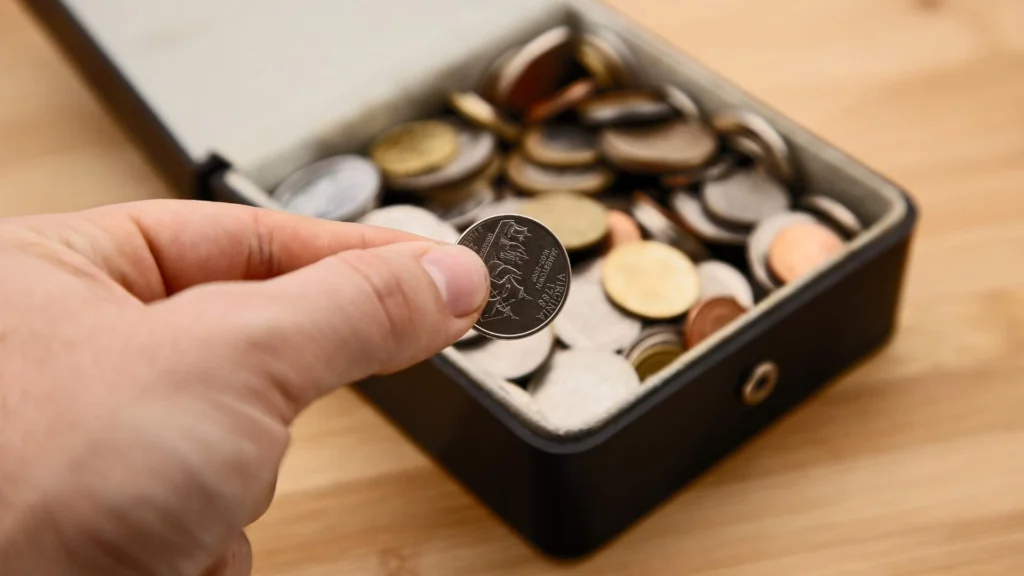Table of Contents
When considering your credit score, how the loan type changes the damage is important. Everyone knows that late payments are bad for your credit score—it’s one of the first rules of personal finance. But here’s a question that often gets overlooked: Does a 30-day late payment on your credit card damage your score in the same way as a 30-day late mortgage payment?
The answer is a resounding no.
While all late payments are negative, lenders and credit scoring models do not view all debt as equal. The type of loan you’re late on sends a specific signal about your financial stability and reliability. Understanding these nuances is crucial for protecting your credit, especially when prioritizing which bills to pay during a financial crunch.
This definitive guide will break down how late payments on mortgages, auto loans, credit cards, and other forms of debt uniquely impact your credit score and how you can mitigate the damage.
The Universal Truths About Late Payments
Before we dive into the specifics, let’s establish the foundational rules that apply to nearly all late payments.
1. Payment History is King
No matter the loan type, your payment history is the most influential factor in your credit score, making up 35% of your FICO score. A consistent record of on-time payments is the bedrock of a good credit profile. Conversely, a history of late payments is the fastest way to demolish it. Lenders believe past behavior best predicts future behavior, making this category paramount.
2. When ‘Late’ Becomes ‘Reported’
You might get hit with a late fee from your lender a day or two after your due date, but the real damage to your credit score doesn’t happen immediately. A payment is generally not reported as late to the major credit bureaus (Experian, Equifax, and TransUnion) until it is at least 30 days past its due date. This 30-day grace period is your last chance to pay before it becomes a negative mark on your credit report for the next seven years.
3. The Severity Scale: 30, 60, and 90 Days Late
The damage from a late payment is not a one-time event; it escalates the longer the debt goes unpaid.
- 30 Days Late: This is the first official negative mark. For someone with a good to excellent credit score (e.g., 780), a single 30-day late payment can cause their score to plummet by 90 to 110 points.
- 60 Days Late: This is more damaging than a 30-day delinquency and signals a continuing financial problem.
- 90+ Days Late: This is considered a severe delinquency. At this stage, your account is at high risk of being ‘charged off’ (written off as a loss by the lender) and sold to a collections agency. In the eyes of some scoring models and lenders, a 90-day late payment can be nearly as damaging as bankruptcy.
Read related blog: How Cash Advances Can Help Avoid Late Payments and Protect Your Credit Score
The Breakdown: How Late Payments Differ by Loan Type
Here is where the nuances come into play. Lenders analyze the type of commitment you’ve broken to gauge the level of risk you pose.
Mortgage Payments
Perceived Severity: Very High
A late mortgage payment is the cardinal sin of late payments. Lenders view it as the most serious indicator of financial distress because it jeopardizes your primary housing. If you can’t manage the payment for the roof over your head, it raises serious questions about your ability to handle any other financial obligation. It signals a fundamental instability that other late payments do not.
- Specific Risks: The most significant risk is foreclosure, the legal process where the lender takes possession of your home.
- Credit Score Impact: The drop is often steeper than any other loan type. This can instantly knock you out of the ‘excellent’ credit tier and make qualifying for future loans difficult.
- Unique Factors: Mortgage lenders typically have a formal process with multiple notices before initiating foreclosure. However, once that 30-day late mark is hit, the damage to your credit is done.
Auto Loans
Perceived Severity: High
Lenders take late car payments very seriously, as with other major secured loans. Your vehicle is a critical asset, often necessary for getting to work and managing daily life. Failure to pay your auto loan on time suggests an inability to manage a significant financial responsibility tied to essential collateral.
- Specific Risks: The primary risk is vehicle repossession. Lenders can and will take back the car to recoup their losses.
- Credit Score Impact: The impact is substantial, second only to a mortgage. A lender, seeing a late auto payment on your report, will hesitate to offer you another large, secured loan.
- Unique Factors: Most auto loans have a 10- to 15-day grace period before a late fee is charged. However, some lenders may engage in ‘early collection efforts’, contacting you even before the grace period ends if they perceive you as a high-risk borrower (e.g., if it’s your first payment).
Read related blog: Types of Installment Loans – 8 Installment Loan Types You Must Known
Credit Cards (Revolving Debt)
Perceived Severity: Moderate to High
Late credit card payments are often interpreted as poor budgeting, overspending, or an inability to manage day-to-day finances. While a single missed payment might not carry the same weight as a missed mortgage payment, a pattern of late credit card payments signals financial irresponsibility.
- Specific Risks: The immediate consequences can be harsh: loss of a promotional 0% APR, a hike to a high penalty APR, a reduction in your credit limit, or even outright account closure.
- Credit Score Impact: The damage is significant, mainly because it’s often accompanied by high credit utilization, another major factor in your score. Even a partial payment less than the minimum due is still reported as a missed payment.
- Unique Factors: Credit cards’ revolving nature means a single late payment can create a snowball effect. The penalty APR and mounting interest can make it incredibly difficult to catch up, leading to a cycle of late payments.
Personal Loans (Unsecured Installment Debt)
Perceived Severity: Moderate
A late payment on an unsecured personal loan is a direct red flag regarding your ability to manage your cash flow without the threat of losing collateral. Since the lender has no assets to seize, they rely almost entirely on your credit history and promise to pay. Breaking that promise is a significant breach of trust.
- Specific Risks: The lender’s primary recourse is to send the account to a collections agency and, potentially, take legal action to obtain a judgment against you.
- Credit Score Impact: It directly damages your payment history. While not as alarming to a future mortgage lender as a late mortgage payment, it will severely hinder your ability to get other unsecured credit.
- Unique Factors: Because there is no collateral, lenders may charge off the debt quicker and send it to collections than secured loans.
Read related blog: Avoid Late Payments: Simple Tips to Protect Your Credit Score
Student Loans
Perceived Severity: Varies (Moderate to Very High)
The perception of a late student loan payment is unique. Lenders are accustomed to seeing periods of deferment or forbearance, so a single, isolated late payment might initially be viewed with slightly more leniency. However, long-term delinquency and default are catastrophic.
- Specific Risks: The consequences for defaulting on a federal student loan (which occurs after 270 days of non-payment) are uniquely severe and federally enforced. They include wage garnishment, seizure of tax refunds and Social Security benefits, and a complete loss of eligibility for future student aid or loan forgiveness programs.
- Credit Score Impact: A default can tank your score by 100 points or more and remains a black mark for seven years. For young borrowers, a student loan is often their oldest account, so damaging it can cripple their credit profile for a long time.
- Unique Factors: While options like deferment and forbearance can be lifesavers that prevent you from missing payments, they are not a “get out of jail free” card. During these periods, you are not building a positive payment history; your progress is paused.
At-a-Glance Comparison: The Severity of Late Payments
| Loan Type | Perceived Severity by Lenders | Primary Risk | Key Consideration for Your Credit |
| Mortgage | Very High | Foreclosure | The ultimate indicator of financial instability. Most damaging for future large loan applications. |
| Auto Loan | High | Repossession | Shows failure to manage a major secured asset. |
| Credit Card | Moderate to High | Penalty | APR / Closure Signals poor budgeting. Damage is compounded by high credit utilization. |
| Personal Loan | Moderate | Collections / Lawsuit | A direct indicator of inability to manage unsecured cash flow. |
| Student Loan | Moderate (initially) to Very High (in default) | Default / Garnishment | Has unique and severe federal consequences. Default is catastrophic for your credit. |
Read related blog: Balance Transfers: Do They Help or Hurt Your Credit Score? The Definitive Guide
What to Do When You’re Facing a Late Payment
Whether you see trouble on the horizon or have missed a payment, your actions can significantly influence the outcome.
Proactive Steps (Before You’re 30 Days Late)
- Communicate with Your Lender: This is the most critical step. Do not wait. Call your lender before you miss the payment. Many offer temporary hardship programs, payment deferrals, or modified payment plans, especially if you have a history of responsible payments. This proactive communication shows responsibility.
- Set Up Automatic Payments: To prevent accidental missed payments, set up automatic drafts for at least the minimum amount due on all your accounts. You can always pay more manually.
- Use Reminders and Tools: Set calendar alerts or use budgeting apps that notify you of upcoming due dates. Keeping bills top-of-mind is half the battle. Beem’s credit monitoring tool provides weekly and monthly credit updates to help you stay informed about your financial condition.
- Tap Into Your Emergency Fund: This is precisely what an emergency fund is for—to cover essential payments during a temporary income disruption and protect your credit score from long-term damage.
Reactive Steps (After You’ve Missed a Payment)
- Pay It Immediately: Pay the overdue amount as soon as humanly possible. It may not be reported to the credit bureaus if you can pay it before the 30-day mark.
- Ask for a ‘Goodwill Adjustment’: If you have an otherwise stellar payment history with that creditor, write them a polite letter explaining the situation (e.g., medical emergency, bank error) and ask them to remove the negative mark from your credit report as a one-time courtesy. It doesn’t always work, but it is always worth trying.
- Check Your Credit Report: Pull your credit reports from all three bureaus to ensure the late payment is reported accurately. If you find an error, dispute it immediately with the credit bureau and the creditor.
Read related blog: Beem Pass: Helping Loved Ones Avoid Payday Loan Traps
FAQs on Late Payments & Credit Score: How Loan Type Changes Damage
How much will one late payment hurt my credit score?
It depends heavily on your starting score. If you have an excellent score (780+), a single 30-day late payment can drop it by 90-110 points. If your score is already lower (e.g., 680), the drop might be smaller, around 60-80 points, because your score already reflects a higher level of risk.
How long does a late payment stay on my credit report?
A late payment will remain on your credit report for up to seven years from the missed payment date. However, its negative impact on your score will gradually lessen, especially as you add more positive, on-time payments to your record.
What’s the difference between a late payment and a default?
A late payment is a missed payment categorized by how long it is overdue (30, 60, 90 days). A default is a formal legal status declared by the lender after a prolonged period of non-payment, indicating the loan agreement has been broken. For federal student loans, this is after 270 days. A default is far more severe and has harsher consequences than a simple late payment.
Conclusion: Prioritize to Protect Your Financial Future
While the golden rule is to pay every bill on time, life can be unpredictable. When faced with tough choices, understanding how lenders view different types of debt can empower you to make strategic decisions that minimize long-term harm to your credit.
The hierarchy is clear: protect your major secured loans—your mortgage and auto loan—at all costs. A late payment on these accounts sends the most alarming signals to the financial world. While a late credit card or personal loan payment is still damaging, it doesn’t carry the same catastrophic weight.
By managing your finances proactively, communicating openly with lenders, and understanding the stakes of each type of debt, you can confidently navigate financial challenges and protect the credit score you’ve worked so hard to build. With Beem’s comprehensive credit monitoring and educational tools, you can avoid late payments, avoid costly surprises, and make confident, informed financial decisions. Download the app here.
















































